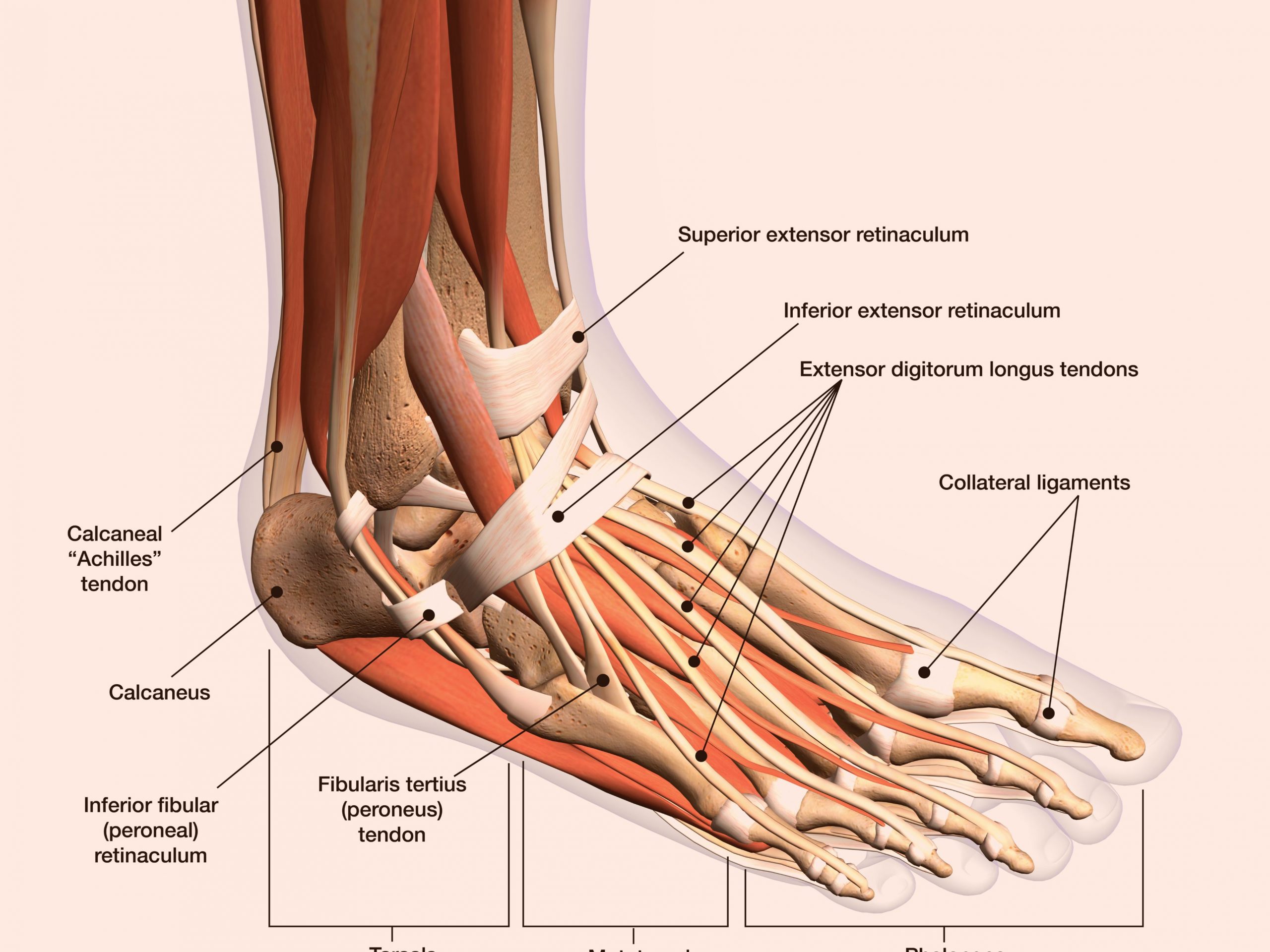Foot pain or liquid sack? Avoid Foot Injuries!
The feet are subjected to enormous cumulative forces during the training and running of a marathon. Depending on how fast you run, you will take anywhere between 1,000 and 2,300 steps per mile. On the marathon day alone, that means you may make up to 60,000 steps. And whilst running, with every step you take, three times your body weight can be exerted on the human foot. This can add up to hundreds or even thousands of tons of force acting on the foot on longer runs.
So, first things first, if you haven’t yet invested in a high-quality pair of running shoes, it is time to do so. Take advantage of the January sales to change your shoes.
Anatomy of the Foot
Your feet play a pivotal role in your running action. As well as helping to propel you forward, they have to offer you support, balance and mobility. Each foot is made up of 28 bones, 30 joints and more than 100 muscles, tendons and ligaments. The band of tissues (ligaments) supporting the arch of your foot, connecting your heel bone to your toes, is known as the plantar fascia.
The muscles, tendons, bones and ligaments of the feet will all strengthen as you run. But this adaptation process takes time. It is therefore crucial that any increase in the number of miles you run is incremental. The usual recommendation is to increase your training load by no more than 10% in any one week. To help avoid wear and tear on the feet, vary the type of surface you run on. If you run exclusively on pavement and tarmac, you are asking for trouble. Experiment with park running, track running, treadmills and even aqua-jogging as possible alternatives.
Most common foot injuries:
Blisters
Symptoms: Sack of fluid in the foot. May be red/black (if blood blister) or clear liquid.
Cause: Repetitive friction between skin and socks due to poor fitting shoes, sock fabric, or bunions, heel spurs, hammer-toe, etc.
Prevention: You should wear proper running socks, and avoid cotton. The best running socks are made from synthetic materials such as polyester and/or acrylic because these fibres take moisture away from the surface of your skin. ‘Twin-skin’ socks help absorb friction and reduce blistering. Check your shoe size, and get advice from a professional sports shoe retailer.
Treatment: Cover the blisters with a plaster. You are advised not to pierce a blister, so as to avoid infection. You should not run if they start to bleed, or if running aggravates the blister. They may take a few days to settle.
Foot injuries: Plantar fasciitis
Symptoms: Pain under the heel bone, sometimes travelling along the underside of the foot. Occurs especially in the morning (your first step when you get up!) or when resting. Can be deceptive because it often gets better after movement such as walking, or at the beginning of your run.
Cause: Usually tight calf muscles. Also may result from high or low foot arch, spending too much time running on hard surfaces, muscle compensation due to misalignment or wrong body mechanics, and being overweight.
Prevention: Stretch regularly, and use a foam roller on calf muscles. Regular sports massage will loosen the tight calves and surrounding fascia.
Treatment: First of all, stop running! Your sports therapist or osteopath can show you appropriate remedial calf stretches. If it is slow to respond to stretching, you may be advised or wish to wear a night splint, heel pads or insoles in your shoes. You should apply ice in the morning if it is painful, to reduce the inflammation. Use a foam roller daily. You may need to take a sports massage to release muscles tension or facia, and to break down any scar tissue that might be exacerbating the problem. If symptoms persist, you may need to see a consultant surgeon.
Foot injuries: Stress fractures
Symptoms: Pain and swelling on the top of the foot. Localised burning or aching sensation somewhere along a foot bone. Particular sensitivity to pressure, especially walking, or tight shoe laces. Pain will increase if you try to run.
Causes: A small crack in the weight-bearing bones of the feet, typically the metatarsals of the mid-section of the foot. This can result from impact, but can also come from repetitive movements, especially running and jumping on hard surfaces. Risk is greater where you do not take adequate rest between training sessions, or suddenly increase running intensity or distance.
Prevention: Rest regularly. Increase distance gradually. Create a proper training plan with your Coach.
Treatment: Stop running! Possibly for several weeks. See a doctor asap to immobilise the foot and arrange an X-ray or MRI scan. Finally, make sure your toenails are cut regularly to avoid ingrowing toenails
A final word
If you are already training, have symptoms or want to avoid be injured, contact us, our osteopaths and sports specialists can help you be injury free!
We hope this information is useful for you. If you need advice or have any questions about our treatments, please contact us. You can find us in Mill Hill Broadway and Islington. We are always happy to help. If you like this blog, please share!



